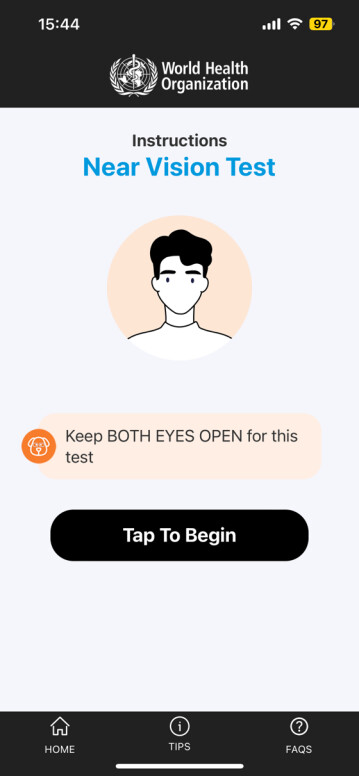A free vision test application, "WHOeyes," was officially launched in Guangzhou on November 25. The app was developed by Professor Mingguang He, chair professor of The Hong Kong Polytechnic University (PolyU) and visiting professor of the Zhongshan Ophthalmic Center, Sun Yat-sen University (ZOC) . The app was endorsed and recently globally launched by the World Health Organization (WHO) on the World Sight Day.

During the launching ceremony, Martin Taylor, the WHO representative to China, and Stuart Keel, Technical Officer of Vision and Eye Care Programme at WHO, and representatives of PolyU delivered video speeches. Top domestic and foreign ophthalmic experts shared insights on promoting eye health, and improving the accessibility, equity, and convenience of eye care services.
WHOeyes is a free, population-facing mobile software application that is able to automatically measure the distance and accurately measures both distance and near vision. WHOeyes is designed according to how an eye care professional would assess visual acuity using a conventional chart in a clinical setting. WHOeyes is suitable for anyone over eight years old.
Professor He Mingguang, the main developer and professor at PolyU, introduced, "We have included six languages, including English, Chinese, Arabic, Spanish, French, and Russian, so that everyone can use it. The tester can easily follow the instructions to start a vision test."

The app is available in the six UN languages: Arabic, Chinese, English, French, Russian and Spanish.

The tester can test both long- and short-distance vision in the app.

After clicking "Tap To Begin," the front camera will measure the distance between the tester’s eyes and the screen.

The tester must swipe in the direction of the tumbling E chart they observed, which is similar to the traditional vision test.

The result and suggestion will come after finishing the sight test.
"It is not easy to be conscious of eye problems if there is no testing for most ophthalmic diseases. When patients develop symptoms, they might miss the best time for correction. Moreover, it is difficult for people who live in areas lacking medical resources to undergo ophthalmic tests. Therefore, I came up with the idea to develop an application that allows people to self-test their eyes. WHOeyes is available for both iOS and Android mobile operating systems and is compatible with mobile devices, such as smartphones and tablets," he added.
Professor Lin Haotian, Director of ZOC, said, "The WHOeyes application can help people quickly and easily identify potential vision issues that merit further checking by a qualified professional, which expanded our service population and improved the screening of ophthalmic diseases. In the future, ZOC will focus on developing telemedicine and artificial intelligence diagnosis technology."
Reporter | Clarice
Photo | Clarice
Editor | Olivia, Steven, Jasmine, James

















